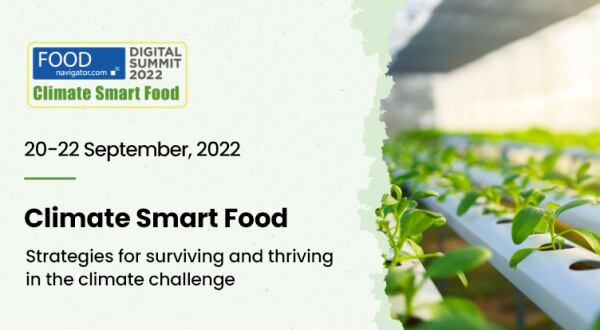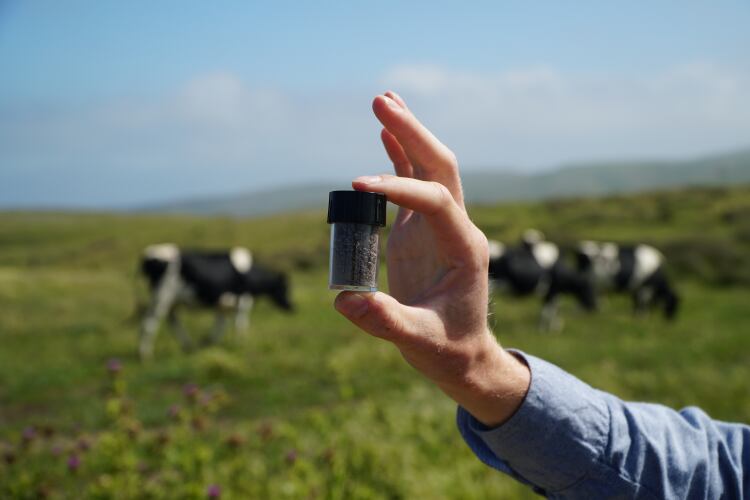During the digital event, which you can watch on demand here, a panel of experts was bullish on the prospects for the ability of the animal agricultural industry to be part of the solution to climate change.
The panel included Dr Frank Mitloehner, Professor and Director of the CLEAR Center, based at UC Davis in California, who is researching and raising awareness about agriculture’s effect on the environment. The food industry is responsible for nearly a third of all global emissions, with livestock making up the largest share at about 14%, he agreed. Much of that is because of methane. And the methane pledge unveiled at COP26 last year in Glasgow aims to reduce global methane emissions by at least 30% by 2030, against 2020 levels.
Methane presents both a ‘liability and an opportunity’ for the agricultural sector, insisted Mitloehner. That’s because this potent gas, more potent but shorter-lasting than C02, can be converted into renewable energy to help other sectors reduce their climate impact. “Methane is a liability if we treat it wrong… If we manage and reduce methane, not just do we save money, we reduce warming. So managing this gas will make it a climate solution and also an economic one.”
For example, in California, where a law came into force in 2018 requiring a 40% cut in of methane emissions by 2030, dairy farmers have so far saved around 2.2 million metric tonnes of greenhouse gasses annually, thanks to methods such as covering manure lagoons.
“That's phenomenal, as we only started a few years ago,” said Mitloehner. “In about three-to-five years, half of California’s manure will be in lagoons that are covered. Their resulting biogas -- 60% of which is methane -- will be captured and converted into transportation fuels or renewable natural gas. And these transportation fuels will then go into the vehicle’s feeds replacing diesel for heavy duty trucks and busses. In the future that biogas will be converted into electricity for vehicles for cars. Our livestock industry has received approximately 2% of all public funds to reduce methane but they have achieved 30% of the methane reductions known today so the state of California.”
He added: “If we go beyond the point of climate neutrality, we can actually offset other sectors such the fossil fuels and that to me is really exciting.”
Methane emissions from Finland’s dairy sector, meanwhile, have fallen nearly 60% over the past six years, revealed Juha Nousiainen, Climate Program Director at the Finnish dairy coop Valio. That’s down to a ‘holistic’ approach on farms, he explained, including measures such as smaller herd sizes, improved production capabilities, animal welfare and higher-quality feeding.
Franciso Norris, Founder & CEO of the Zero Emissions Livestock Project or ZELP, which has developed wearable technology that can neutralise methane emissions from cattle, revealed more details about the innovation. He said: “We put a lot of design efforts into this to ensure this is a 'plug and play' solution that could be generating as much as 2.5 tonnes of C02 equivalent reductions per animal per year that's roughly 60-65% of the methane that the animal expels.”
Data is key for the journey to Net Zero
David Nickell, VP of Sustainability, Animal Nutrition and Health, at Dutch multinational Royal DSM, which has launched a platform designed to reduce livestock emissions through feed, said that relevant LCA metric systems are critical to measure and know how to reduce footprints in animal production.
“There's tremendous amounts of innovation out there which has made huge double-digit reductions in the footprint of animal production… But you need to have a basket of options because very farm every species is highly nuanced.
“At the end of the day, whatever the system, you still need to be able to measure that and we're enabling customers to really get on top of their footprint. If they can do that, they really do have the ability to direct their resources and see where the hotspots are and where to make improvements whether that's nutritional or through to infrastructural changes or other technologies on the farm.
“When I look at all these differnt technologies we are discussing i am really bullish about where we are going,” added Mitloehner. But it's also not all about methane. There are concerns, for example, about the livestock industry’s water use, the conversion of forests into agricultural land.
“We must manage methane because then it can be an asset, but we must not lose our focus also on the other impact's livestock has,” agreed Mitloehner.
Missed our panel on how meat and dairy production is looking to reduce its climate impact? Or any other content streamed the Climate Smart Food broadcast? Don’t worry, it’s all available on demand. Click HERE to view the programme and HERE to register and view at your leisure.






